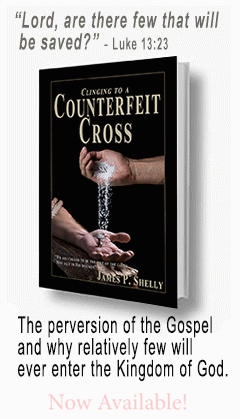Bible Commentaries
John Dummelow's Commentary
Leviticus 16
Ritual of the Day of Atonement
(See also Leviticus 23:26-32; Numbers 29:7-11; Exodus 30:10.)
This solemn ceremonial took place once a year on the tenth day of the seventh month (Tishri = September). It was enacted by the high priest alone, but the whole nation indicated its interest and participation in it, by resting from all manner of work, by keeping a very strict fast, and by assembling for an 'holy convocation.' The ritual of the Day of Atonement marked the culminating point of the Levitical system, and was calculated to impress the minds of the worshippers in a peculiar degree. Most of the other sacrifices and purifications were occasional and personal, but this was the yearly atonement for the nation as a whole, including the priesthood itself, and the yearly purification of the sanctuary and its parts from the defilement of the sins of the people in whose midst it stood. It gathered up and included all the separate and individual sacrifices of the year, and restored to the nation the holiness it had lost. It was but natural that Christians should see, in its peculiarly striking and solemn ritual, a foreshadowing and illustration of the atonement wrought by Christ, through the one sacrifice of Himself, and His entering into the Holy Place, there to appear in the presence of God for His people. This is pointed out by the writer of the Epistle to the Hebrews: see Hebrews 4:14; Hebrews 6:20; Hebrews 9:11-28, which should be read in this connexion.
A great deal has been made of the fact that there is no mention of the actual observance of the Day of Atonement till after the exile, from which it has been inferred that its institution is of post-exilic date. But the argument is not convincing. The connexion with the death of Nadab and Abihu (see Leviticus 16:1), and the mention of Azazel (see Leviticus 16:8 and note), indicate that the ritual of this chapter rests on a very ancient basis. And not only are the preexilic books silent on the Day of Atonement, but the post-exilic contain no reference to it either, which shows the precarious nature of the argument from silence.
The Day of Atonement is still the great day of the Jewish sacred year, and is observed with much solemnity as a day of humiliation and repentance: see on Exodus 32:32.
3-5. The first act of the high priest is to choose the sacrificial victims, to bathe himself, and exchange his distinctive vestments for a garment of white linen, the garment of the ordinary priest.
6-11. He then presents the sin offering for himself and for his house, and casts lots between the two goats of the sin offering for the people, one of which is to be slain and the other let loose. He then sacrifices his own sin offering.
8. For the scapegoat] RV 'for Aaazel.' This word does not occur elsewhere in OT. The parallel, for the Lord, suggests that it should be taken as a proper name, and left untranslated. The word scapegoat in AV is not a translation, but indicates merely the use to which this goat is to be put. Azazel is understood to be the name of one of those malignant demons with which the superstition of the Israelites peopled the wilderness and all waste places (see Isaiah 13:21; Isaiah 34:14, cp. Matthew 12:43; Mark 1:13). The sending of the sin-laden goat to him (Leviticus 16:21-22) signified the complete removal of the sins of the people and the handing them over, as it were, to the evil spirit to whom they belonged: cp. the ceremony connected with the cleansing of lepers (Leviticus 14:6-7). This rite may have been intended, at all events it would serve, to counteract any disposition to honour and worship such evil spirits (cp. Leviticus 17:7).
12-14. The high priest next enters the Holy of Holies with incense and the blood of his sin offering, which he sprinkles once on the mercy seat and seven times in the space before it, thus making atonement for himself and his house.
15-19. He then goes out into the court and sacrifices the goat on which the lot fell 'for Jehovah,' and brings its blood as before into the Holy of Holies to make atonement for the sanctuary and its parts, and cleanse them from the sins. which mingle even with the best service that man can offer to God.
20-22. He now takes the goat destined 'for Azazel,' and laying his hands on its head confesses over it the sins of the people, after which a man standing in readiness leads the goat away into the wilderness and releases it. In the time of the Second Temple the goat was destroyed by being precipitated from a rock 12 m. from Jerusalem.
23-28. He finally bathes and resumes his distinctive vestments and offers the two burnt offerings for himself and the people, in token of entire reconsecration to the service of God. At the same time he burns the fat of the two sin offerings, the flesh of which is taken outside the camp and there consumed. In later times the high priest at this point read in the hearing of the people prescribed portions of the Law, viz. Leviticus 23:26; Numbers 29:7-11, concluding with a series of benedictions.
29. Afflict your souls] i.e. observe a fast: see Psalms 35:13; Isaiah 58:3, Isaiah 58:5. This is the only fast enjoined in the Mosaic Law. After the exile fasting was a common religious usage: see e.g. Ezra 8:21; Nehemiah 9:1; Esther 4:8; Zechariah 8:19; Matthew 9:14-17; Luke 2:37; Luke 18:12; Acts 13:2-3; Acts 14:23. In Acts 27:9 the reference is to the Day of Atonement which was called 'The Fast' par excellence.
34. He] i.e. Aaron.








Comments